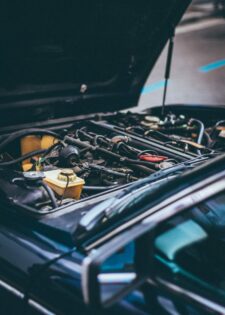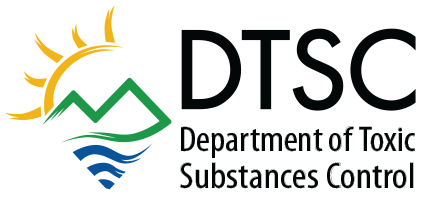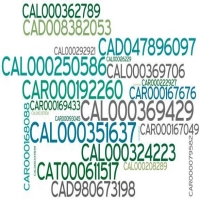Business Hazardous Waste Generators
Free Training Available
Types of Generators
ID Number Information
U.S. EPA/DTSC Gen. Imp. Rule
Many types of businesses in California are hazardous waste generators. Hazardous waste is a waste with properties that make it potentially dangerous or harmful to human health or the environment. There are many wastes that are hazardous waste.
This page has been created to assist you, the business generator of hazardous waste, to learn more about management of your waste. Our website has many resources available for you to understand your responsibilities and remain compliant with laws and regulations. If you are a household (residential) generator of hazardous waste, please go to our Hazardous Waste Information for Households page to learn how to manage your waste.
Hazardous waste can be liquids, solids, or contained gases. They can be the by-products of manufacturing processes, discarded used materials, or discarded unused commercial products such as cleaning fluids (solvents) or pesticides.
Businesses must manage their hazardous waste from the point of generation of the waste until proper disposal or recycling. This is called “cradle-to-grave” liability, and is required by law. A part of this responsibility includes identifying what is and is not a hazardous waste, understanding what size your business is based on the quantity of hazardous waste generated, obtaining a hazardous waste identification number, labeling and storing the waste properly, and ensuring the waste is properly disposed or recycled.
Certain wastes can be managed under less rigorous management regulations, such as universal waste. These include batteries, fluorescent lamps, electronic waste, mercury thermostats, aerosol cans, solar panels/photovoltaic modules and more. It is important to know that California’s universal waste requirements are generally more stringent that those requirements adopted by the United States Environmental Protection Agency (U.S. EPA). For more information, please visit our Universal Waste web page.



Free Training
We highly recommend taking our FREE self-paced Hazardous Waste Classification Training. It is a valuable training which will help you to understand how to classify your hazardous waste. We also have a web page, Defining Hazardous Waste which provides a good introduction to understanding how to determine whether your waste is a hazardous waste.
Types of Generators (Small Quantity vs Large Quantity Generators)
In California, generators are divided into 2 categories:
- Small Quantity Generator (SQG) – Generators of less than 1,000 kg of hazardous waste per calendar month (excluding universal wastes), and/or 1kg or less of acutely or extremely hazardous waste per calendar month.
- Large Quantity Generator (LQG) – Generators of 1,000 kg or more of hazardous waste per calendar month (excluding universal wastes), and/or more than 1 kg of acutely or extremely hazardous per calendar month.
Each type of generator must comply with its own set of requirements. There is a California Hazardous Waste Generator Summary Chart available to download that shows some of the requirements for SQGs and LQGs. If the amount of hazardous waste produced during a calendar month puts a generator in a different category, then they are responsible for complying with the applicable standards for that category of generator for that calendar month. For example, if a generator produces 500 kg of hazardous in June, they must comply with the SQG requirements but if they produce 1,200 kg of hazardous waste in the next month they must follow the LQG requirements. Generators who change status should consult with their Certified Unified Program Agency (CUPA). To find your CUPA, please use the Cal/EPA Unified Program Regulator Directory.
Determining Your Generator Category
Generators must count (i.e. must add up, or total) the entire quantity of hazardous waste (both federal and state wastes) generated in a calendar month, pursuant to California Code of Regulations title 22 (22 CCR) section 66262.34, to determine their generator status for that month. Generally, most hazardous waste is counted, however some are not, such as Universal Waste.
The following are some examples of hazardous waste that count towards your category as a generator:
Type of Hazardous Waste Yes No
Pharmaceutical Wastes Regulated Under RCRA X
Non-Empty Containers X
Used Oil Sent For Recycling X
Treated Wood Waste X
Paint X
PCB Waste ≥ 5 parts per million (ppm) for liquids or ≥ 50 ppm for solids X
Our Counting Waste page has more in-depth information on this topic.
ID Numbers
A business that generates hazardous waste will need an ID Number. There are two basic types: U.S. EPA ID numbers and California (or State) ID numbers. Most businesses obtain a permanent number, but a temporary number can be issued if a business that doesn’t normally generate hazardous waste has a short-term or one-time need. Temporary numbers are only good for 90 days. You can find more information regarding ID numbers at our ID Number page.
In California, all generators will need to complete an Electronic Verification Questionnaire (eVQ) annually to ensure that the information on record for the ID Number is correct and current. To learn more about the eVQ, please visit the Electronic Verification Questionnaire System.
IMPORTANT
 If you do not complete this online questionnaire, your number will be inactivated and you will be unable to ship your hazardous waste.
If you do not complete this online questionnaire, your number will be inactivated and you will be unable to ship your hazardous waste.
Manifests
Hazardous waste is tracked from the point of generation (your site) to its final destination by using manifests. A Uniform Hazardous Waste Manifest (manifest) or an electronic manifest (e-manifest) must accompany most hazardous waste that is shipped off site. The manifest or e-manifest is the shipping document that travels with hazardous waste from the point of generation, through transportation, and to the final treatment, storage, and disposal facility (TSDF). Each party in the chain of shipping, including the generator, signs and retains one of the copies, creating a “cradle-to-grave” tracking of the hazardous waste. ID numbers are needed by all parties on the manifest. For more information about manifests, please go to our Hazardous Waste Manifest Information page.
Transporting Hazardous Waste
In California, unless specifically exempted, it is unlawful for any person to transport hazardous waste unless the person holds a valid registration issued by DTSC. A hazardous waste transporter registration is valid for one year and is assigned a unique registration number. Our Registered Hazardous Waste Transporter Database page can help you find a transporter for your waste. DTSC does not endorse or recommend any particular company.
If you are a hazardous waste transporter, please go to the Hazardous Waste Transporter page to learn the requirements for becoming a registered transporter and to register as a hazardous waste transporter.
More Information
To learn more about the requirements for generators of hazardous waste, please read our DTSC Hazardous Waste Generator Requirements. This page has more information on accumulation, labeling, emergency plans, training, reporting, and more.
Generator Improvements Rule (GIR)
On May 30, 2017, the U.S. EPA’s Hazardous Waste GIR went into effect. However, the GIR does not take effect in California until DTSC adopts the rule, or parts thereof, via the rulemaking process. For more information on the Generator Improvement Rule and DTSC’s ongoing work to adopt sections of this rule, please go to our Generator Improvements Rule webpage.
Links for Generators
Hazardous Waste Related Links
- Annual/Biennial Reports
- Annual Fee Summary
- Customer Billing Portal (Cost Recovery)
- DTSC Advisory on the Management of Spent Fuels
- EnviroStor
- Hazardous Waste Publications
- Find a Registered Hazardous Waste Transporter
- Hazardous Waste Policies & Procedures
- Hazardous Waste Project Documents
- Imports and Exports of Hazardous Waste
- Kettleman Hills Facility
- Land Use Restriction Sites
- Office of Criminal Investigations
- PV Modules (Solar Panels)
- Regulatory Assistance Office
- Report an Environmental Concern
- Retail Waste
For Additional Questions, Contact the RAO Office
Toll-Free in CA: 800-728-6942 or 800 72-TOXIC
Outside CA: 916-324-2439
Email: RAO@dtsc.ca.gov



